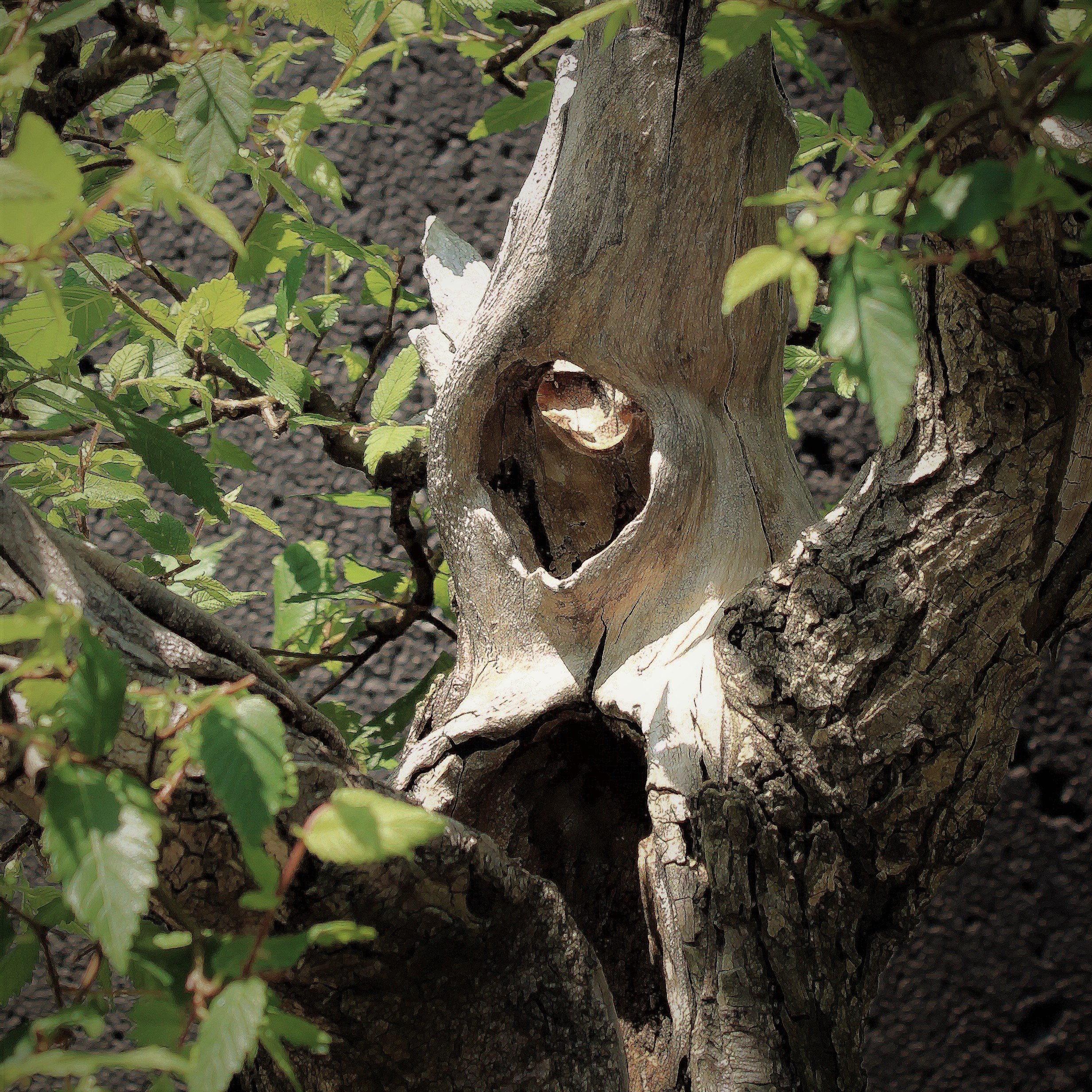The challenge with this pine was not only to give it a new, more dynamic design, but to deal with an excess of long, leggy branches. A good many branches were removed in the demonstration, and others were intentionally killed but left in place on the tree as deadwood. This was the fate of that problematic lowest branch, which had been chronically weak from being in a disadvantaged position. Lack of light will no longer be an issue for that branch!
Read MoreWhen I found a lone American elm growing in a small plastic pot among the excess plants in the Arboretum's nursery, it had immediate appeal. The idea of making a bonsai out of a species so well known and badly troubled seemed a novelty, and at the very least it gave me the opportunity to protect this one individual tree. Though nothing about that particular elm, little more than a stick in a pot, suggested it would in any way make a good bonsai.
Read MoreThe telling of this particular tree's story should make one point plainly clear: It takes time to build a bonsai. Woody plants, even vigorous growers like American elms, develop at a rate most people find rather slow. On top of that the ability level of the person attempting to do the training of the plant has to be taken into account, and then come the hazards of chance along the way. Many plants are aimed for a bonsai future, but few actually make it.
Read MoreI forgot that I was looking at little Chinese elms growing in a shallow container and instead imagined them to be big buckeyes and yellow birches growing among the boulders on a windblown ridgeline. The tray landscape looked that believable to me. This seems implausible even as I write it.
Read MoreThis humble but durable little tree has a poetic name: Golden Heart. It can be said, and not inaccurately, that this poetic name refers to the beautiful golden yellow color the tamarack turns every autumn. A quietly glorious sight to see. This bonsai is called Golden Heart for another reason, though, and it is something few people know about.
Read MoreAunt Martha's Magic Garden was put together in a public demonstration. Twice. The first time was in spring of 2008. We had received the donation of the hinoki bonsai in early 2006, so there had been two years to get to know it, to look at it and think about it. I had decided the best way to utilize the tree was as the centerpiece of a tray landscape.
Read MoreWhat matters more, and the reason for detailing the history of this specimen, is the degree to which it has evolved. More than simply the product of normal aging, this particular black pine transformed the way it did because the person who grew it over the course of that time experienced an evolution of aesthetic sensibility.
Read MoreDissatisfaction was once again creeping in. The tree looked better to me now than it did when it was trying to be classical, that's for sure, but there was still much room for improvement….It was time to push the tree further along the path of design development.
Read MoreIt took a long time to build that bonsai. To change it would require some drastic alterations that would likely set the tree back a decade or so. Whenever considering such a move you have to question if the end result would warrant the effort. Every tree has a certain limited capacity for perfection.
Read MoreIt is possible, even likely, that the person who creates a particular piece of self expression, such as a bonsai, intends it to be perceived a certain way, to tell a certain story, but other people interpret it differently. There is nothing at all wrong with this. Ideas spark other ideas, and diversity is the catalyst in the evolutionary process that pushes all creation forward.
Read More







